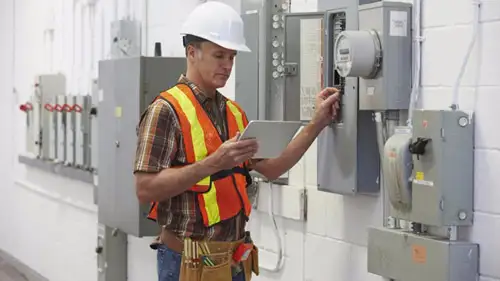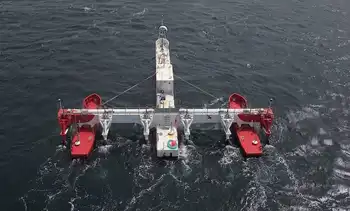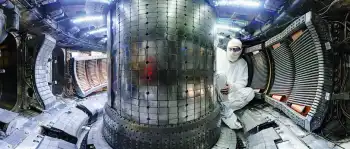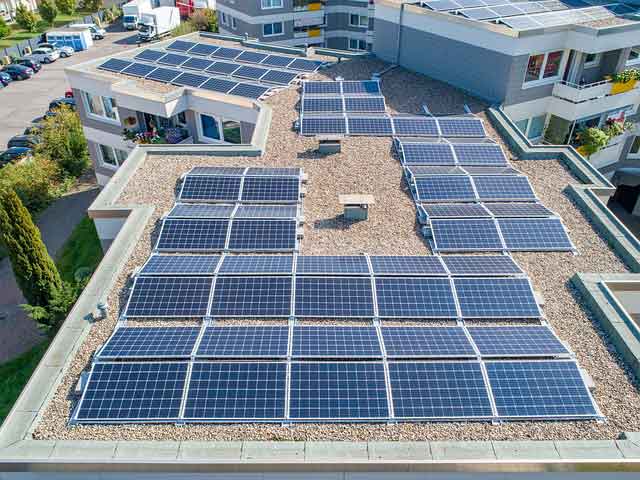The race to build a better car battery
By Toronto Star
CSA Z463 Electrical Maintenance
Our customized live online or in‑person group training can be delivered to your staff at your location.

- Live Online
- 6 hours Instructor-led
- Group Training Available
"We're in the same waiting game as everybody else," says Clifford, founder and chief executive of Toronto-based ZENN Motor Company Inc., during an early lunch at a downtown greasy spoon.
ZENN, you may recall, owns a minority stake in Texas-based EEStor Inc., which is building a new energy-storage device based on ultracapacitor technology that could – if it works as promised – render conventional electro-chemical batteries obsolete. In addition to ZENN's 10.7 per cent ownership of EEStor, the company also has exclusive rights to use the technology in vehicles with a curb weight of up to 1,400 kilograms.
The Star in March 2006 was the first newspaper in the world to write about EEStor, which is partly funded by venture capital powerhouse Kleiner Perkins Caufield and Byers and has collaborated with Lockheed Martin to develop power-packed military weapons.
On a more peaceful note, imagine an electric car that can drive from Toronto to Montreal on a single charge. Imagine charging up your car, mobile phone, or notebook computer in a few minutes. Imagine a battery that outlasts the device it powers, and which doesn't contain toxic chemicals. Imagine superbatteries that can affordably store massive amounts of energy from renewable sources, such as wind, and release that energy as on-demand power.
This is the promise. But it means very little to the world of skeptical engineers, academics, business leaders and auto companies that understandably demand hard proof. They need to see a working commercial product. Until that happens, EEStor is just more noise in a sea of innovation, and ZENN an exercise in wishful thinking.
Clifford, who is waiting for EEStor to deliver that first commercial unit by the end of this year, says ZENN's future is riding on that delivery. "The entire aspect of our business model is dependent on EEStor commercializing that technology," he says. "The transformative moment is with the commercial proof, and then the whole tenor of the discussion changes to the excitement about the reality."
The business model wasn't always so alluring. ZENN, formerly Feel Good Cars, got its start making low-speed cars that run on lead-acid batteries. "Lipstick on a golf cart" is how one analyst described it. But the company learned a lot from that venture – how to build a distribution network, the challenge of meeting safety regulations, and the political minefields often involved.
As EEStor's technology evolved so too did ZENN's ambitions. First it would use the new storage device in its low-speed vehicles. Then it was going to make a high-speed electric vehicle, called the CityZENN, based on EEStor's technology. Clearly ZENN's vision was getting ahead of the capabilities of a company expected to lose six times more this year than its $1.5 million or so in annual revenues.
Not surprisingly, ZENN last month took a U-turn. It decided it no longer wanted to be a maker of electric cars. Instead, it would focus on developing an EEStor-based electric drive train called ZENNergy that it could sell to other car manufacturers around the world.
"CityZENN felt limiting for us," says Clifford. "We would have been just another little niche OEM, and I'll put Tesla (Motors) and Coda (Automotive) and Fisker (Automotive) into that group. They have big, big challenges, not only in developing their product, but to develop that distribution and to build all that infrastructure around the car, and that's a huge commitment."
Then there's the certification and testing required, without which it would be impossible to offer warranties. "Quite frankly we don't have the expertise to put a vehicle through that level of certification. It's a huge process," says Clifford.
So now Clifford waits for delivery of a technology that will make or break his company.
Ultracapacitors, it should be noted, already exist in many applications. Some hybrid cars already use them to capture energy from braking and offer vehicles a burst of acceleration from a stopped position. Ultracapacitors don't rely on slow chemical reactions to store and release their energy. Instead they quickly absorb a charge and store electrons on layers of plates, which can release the charge just as fast – the way a dry rug can hold static electricity and instantly transfer when you touch a metal doorknob.
The problem is that the best commercial ultracapacitors today can only hold one-twentieth the energy of a lithium-ion battery the same size. Some researcher says it's virtually impossible to develop a reliable, competitively priced ultracapacitor that can match or exceed the energy storage capability of lithium-ion batteries, which are emerging as the standard for electric vehicles. At best, an ultracap might be able to achieve a quarter of a battery's energy density.
EEStor says its ultracapacitor has several times the energy density of lithium-ion batteries. It's an almost unbelievable claim that begs suspicion. But more open-minded engineers out there are less dismissive and prefer to watch events unfold as cautious but hopeful observers.
"Honestly, I don't know if EEStor has solved it or not," says Elon Musk, co-founder and chief executive of electric carmaker Tesla Motors. "I've heard people say it's just B.S., and others say it's a big breakthrough. Until you see something on the road, objectively it's hard to say what's true."
Musk is a fan of ultracapacitors. He moved to California in the mid-1990s to do graduate studies on ultracapacitors for vehicles. Instead he founded a software company, then online payment service PayPal, and then Tesla.
"I do think there's a lot of potential with ultracapacitors, so if somebody can break the nut on that it would be the end solution."
And EEStor's not the only one trying. Vladimir Krstic, professor in the department of mechanical and materials engineering at Queen's University, is working with Stratford, Ont.-based Alupro-MPI on a new type of advanced ceramic alloy that could dramatically outperform existing materials.
The plan is to use an ultrasonic device that can forcefully blend liquid metals, such as barium and titanium, which have been impossible to mix. New ceramic alloys that result can raise the bar on ultracapacitor energy storage.
Krstic says the initial target is to make an ultracapacitor with "at least" a third of the energy density of lithium-ion batteries, then going higher from there. But like all research, the pace of innovation depends on market need and financial backing, whether from government or the private sector. "In order to speed this up we need to have more funding," he says.
Meanwhile, some companies are making the best use of the ultracapacitors we have today. Virginia-based Sinautec Automobile Technologies and its Chinese manufacturing partner have designed a municipal bus that runs exclusively on ultracapacitors.
There's a catch: the buses can only travel a few kilometres before running out of juice.
However, Sinautec is taking advantage of the quick-charge capability of ultracapacitors and designing bus routes accordingly. In Shanghai, for example, when a bus drops off and picks up passengers, a metal boom rises a few feet from its roof and connects to an overhead charging line, filling up the ultracapacitors in less than two minutes.
The approach makes sense for dense cities, on university campuses or at airport terminals. Dan Ye, executive director of Sinautec, says that as ultracapacitors improve and add range to next-generation buses the required charging infrastructure can shrink. "We have a few American cities that have shown a lot of interest," says Ye.











